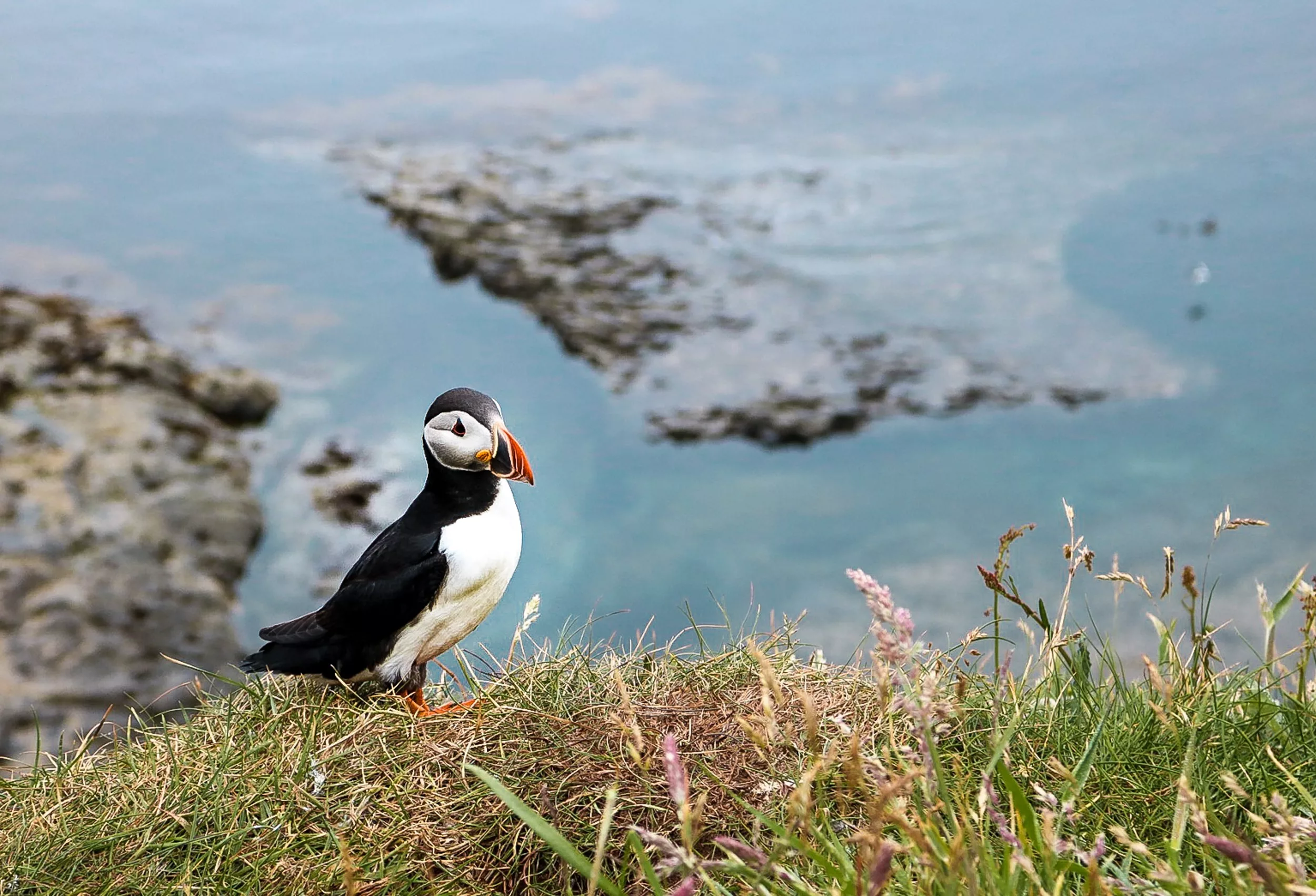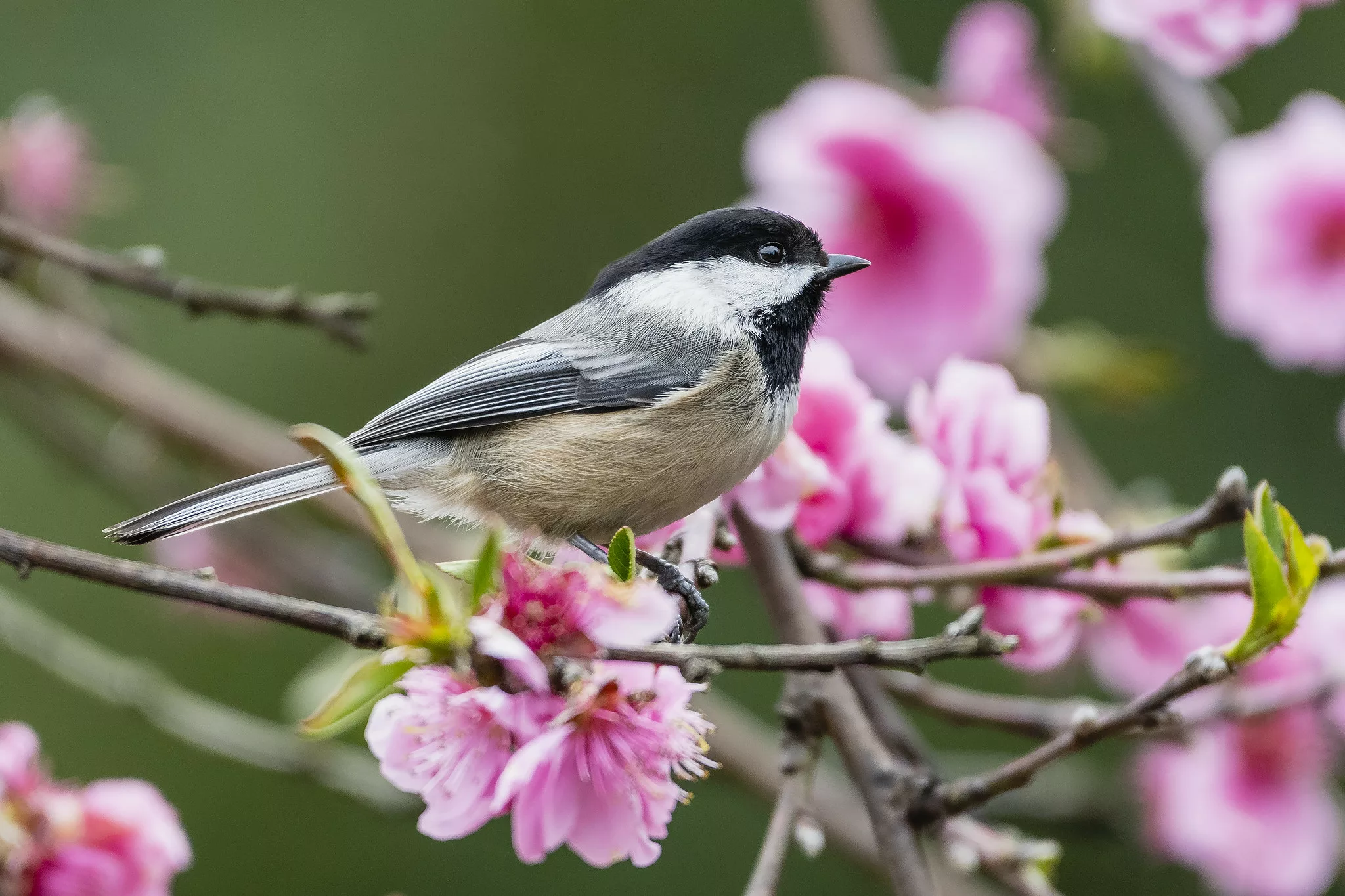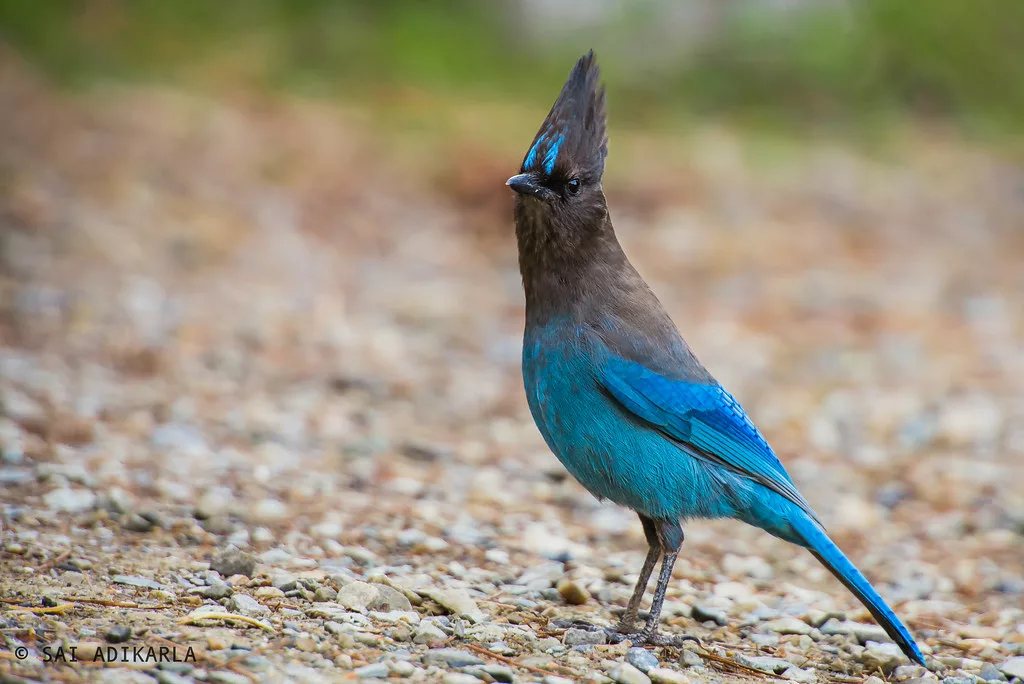Canada’s 40 Best Birding Destinations

With its vast wilderness and diverse habitats, Canada is rich with bird life. In fact, 462 species have been recorded here. You can watch birds of prey soaring in the skies, seabirds diving into the oceans, songbirds flitting about the forests or waterbirds swimming and splashing in our many lakes and wetlands.
Whether you are planning your next birding vacation (finally) or are looking for something closer to home, you’ll find birding hotspots in every province and territory. Here are some of Canada’s best birding destinations, from coast to coast to coast.
Newfoundland

1. Cape St. Mary’s Ecological Reserve, Newfoundland: Cape St. Mary’s is famous for its seabird rookery, home to the largest colony of northern gannets in Newfoundland—around 30,000 birds during breeding season. You can also see thousands of thick-billed murres and common murres here. Hike along the rugged cliffs and watch these beautiful seabirds diving into the ocean and scrambling along the aptly-named “Bird Rock.” Visit the interpretation centre where staff can answer questions and guide you through the reserve.
2. Elliston Puffin Viewing Site: Elliston is one of the best places in North America to see the Atlantic puffin, the provincial bird of Newfoundland. From May to September, puffins nest on a rocky outcrop known by locals as “the puffin site.” You don’t need a spotting scope or a boat to get a good view—a five minute walk will bring you to the site, where you can watch these colourful auks from just a few feet away.
Nova Scotia

3. Brier Island: Located in the Bay of Fundy, Brier Island is outstanding for seabirds. During late summer and fall, take a whale watching tour—not only to spot whales but to see pelagic birds like shearwaters, phalaropes, jaegers and south polar skuas. If you don’t have sea legs, set up a spotting scope along the northwest or west shore. In the fall, witness raptors migrating, with large “kettles” of broad-winged hawks and sharp-shinned hawks flying low overhead.
4. Cape Sable Island: The southernmost point of Nova Scotia, Cape Sable Island has sandy beaches, mudflats and salt marshes that attract tons of shorebirds—especially during migration. (A quarter of a million semipalmated sandpipers were recorded here at one time!) In the winter you’ll see thousands of short-billed dowitchers, black-bellied plovers, sanderlings, ruddy turnstones, least sandpipers and white-rumped sandpipers. In the summer, endangered piping plovers nest on the sandy beaches.
5. Amherst Point Migratory Bird Sanctuary: Nestled in the Bay of Fundy, the Amherst Point Migratory Bird Sanctuary is a haven for water birds. Many duck species nest here: American black duck, American coot, American wigeon, blue-winged teal, common gallinule, gadwall, green-winged teal, northern pintail, northern shoveler, pied-billed grebe and ring-necked duck. The elusive American bittern, sora and Virginia rail nest here. The marsh is also home to black terns, bobolinks, short-eared owls and various songbirds.
6. Cape Breton Highlands National Park: You can’t visit Nova Scotia without going to Cape Breton, and you can’t go to Cape Breton without seeing Cape Breton Highlands National Park. Climb mountains and hike through the old growth forests to find boreal songbirds like the Bicknell’s thrush, or kayak the lakes and coastline to see wood ducks and osprey—the provincial bird of Nova Scotia. Take a boat tour to the rocky islands offshore to visit colonies of razorbills, black legged kittiwakes, guillemots, bald eagles and Atlantic puffins.
Prince Edward Island

7. PEI National Park: Situated on the island’s north shore, PEI National Park is 60 kilometres long and contains various habitats including sand dunes, freshwater wetlands and saltmarshes. The park is designated an Important Bird Area, and it’s a great spot for birdwatching. Most of the island’s species can be seen here. The most common species are great blue heron, bald eagle and osprey. The park’s protected beaches provide nesting habitat for the endangered piping plover.
8. East Point: East Point is a terrific place for birding. The bird watch tower provides a great vantage point for spotting pelagic birds. East Point supports a colony of great cormorants, which nest on the red sandstone cliffs. Endangered piping plovers nest along the sandy beaches.
New Brunswick

9. Grand Manan Island: The birding starts before you even get to Grand Manan, as the ferry crosses a prime feeding area for seabirds. Once there, Grand Manan is a bird watcher’s paradise—360 species have been recorded here. You can view seabirds from several spots along the coast or from a whale watching boat—which gives you the best chance of seeing pelagic birds like shearwaters, storm-petrels, northern gannets, black-legged kittiwakes, jaegers, and phalaropes. Take a tour to Machias Seal Island to see the colonies of arctic terns, Atlantic puffins, razorbills and common murres.
10. Miscou Island: Miscou Island is located off the northeastern tip of New Brunswick, between the Baie des Chaleurs and the Gulf of St. Lawrence. This low-lying island has extensive beaches, peat bogs and estuaries that supports gulls, terns, waterfowl and shorebirds. During fall migration, large numbers of songbirds stopover on Micou Island—often their last rest stop before flying to their wintering grounds. The entire island is designated an Important Bird Area, in large part because of piping plovers that nest on its beaches.
11. Mount Carleton Provincial Park: Named after the highest peak in the Maritimes, Mount Carleton Provincial Park is located in northern New Brunswick. Remote and mountainous, the forest and lakes are teeming with wildlife, including many boreal songbirds. The park is designated an Important Bird Area as it provides critical nesting habitat for the threatened Bicknell’s thrush. Hike to the peaks of Mount Sagamook, Mount Head and Mount Carleton to find the rare and elusive species. The park has a number of hiking trails, including one that is wheelchair accessible.
Quebec

12. Cap Tourmente National Wildlife Area: Located on the north shore of the St. Lawrence River, 50 kilometres east of Québec City, the Cap Tourmente NWA is a mosaic of habitats: marshes, plains, forests and mountains. The wildlife area was established in 1978 to protect snow goose habitat, and in 1981 it became the first Ramsar site in North America. During spring migration, tens of thousands of snow geese gather in the marshes here. The river and escarpment form a corridor that funnels a wide diversity of birds during migration. In summer, Nelson’s sharp-tailed sparrows and bobolinks nest here.
13. Tadoussac Bird Observatory: The Observatoire d’Oiseaux de Tadoussac (OOT) is the first bird observatory in Quebec. Located in the Tadoussac dunes, this is considered the best place in Quebec to see hawks during migration. Visitors can observe the bird banding program from September to late October. At night, staff and volunteers capture and band boreal owls, which migrate through the area. The best time to visit is during the Migratory Bird Festival in September.
14. Baie de Lisle-Verte National Wildlife Area: Home to southern Quebec’s largest expanse of spartina marshes, Baie de L’Île-Verte is a designated Important Bird Area and a Ramsar site. The marshes provide critical habitat for the American black duck. Approximately 35,000 birds of 130 species migrate through every spring. More than 13 species listed under Canada’s Species at Risk Act are found here, including the peregrine falcon, short-eared owl and bobolink.
Ontario

15. Algonquin Park: Ontario’s iconic Algonquin Park has 7,635 square kilometres of forests, bogs, lakes and rivers. The park is a major destination for camping and canoeing, and it is a popular birding destination. More than 260 bird species have been recorded here. Birders flock here to see northern specialities like the Canada jay, spruce grouse, boreal chickadee and black-backed woodpecker. Common loons can be found nesting in the thousands of lakes.
16. Carden Alvar Provincial Park: This is one of Ontario’s newest provincial parks, established in 2014 to protect one of Ontario’s only pockets of alvar—a rare type of grassland characterized by thin soils and sparse vegetation atop limestone bedrock. The area is home to at least 230 species of birds, including several species at risk: short-eared owl, least bittern, red-headed woodpecker, yellow rail, bobolink, eastern meadowlark and grasshopper sparrow. Perhaps the most sought-after bird in Carden is the endangered loggerhead shrike.
17. MacGregor Point Provincial Park: MacGregor Point is located near Port Elgin on the Bruce Peninsula, spanning seven kilometres of Lake Huron coastline. The shoreline is a migratory route and 200 species of birds have been sighted here. Great blue herons, black-crowned night herons and the great egrets are regulars in the wetlands. Come for the Huron Fringe Birding Festival, held annually on the first two weekends after the May long weekend.
18. Presqu’ile Provincial Park: Presqu’ile Provincial Park is a birding hotspot. Over 330 species have been recorded here, including 130 breeding species. Because of how the peninsula juts out onto Lake Ontario, it is often the first place birds land after flying north across the lake during spring migration. May is the best time to see migrating songbirds, especially during the Warblers and Whimbrels Weekend. In the summer you can see huge colonies of herring and ring-billed gulls, common and caspian terns, great egrets, double-crested cormorants, and black-crowned night herons. Fall is the best time to see shorebirds. March is a great time to see ducks, geese and swans as the ice retreats along Presqu’ile Bay.
19. Point Pelee National Park: Point Pelee National Park is arguably the most famous birding destination in Ontario, if not Canada. Located on the north shore of Lake Erie, the park is a migrant “trap” that funnels huge numbers—and a wide diversity—of birds. 390 species have been recorded here. Spring migration peaks in mid-May, when the park hosts the Festival of Birds.
Manitoba

20. Oak Hammock Marsh: About 20 kilometers north of Winnipeg, this wildlife management area has 36 square kilometres of restored prairie marsh, aspen-oak bluff, waterfowl lure crops, artesian springs and some of Manitoba’s last remaining tall-grass prairie. Three hundred bird species have been recorded here, and during migration, more than 400,000 birds (waterfowl) have been seen in a day. Oak Hammock Marsh is the site of the Harry J. Enns Wetland Discovery Centre. This family-friendly, accessible interpretive centre offers a variety of educational programming, including canoe rentals.
21. Pembina Valley Provincial Park: Pembina Valley is a great birding spot throughout the year. The valley forms a natural auditorium, echoing with the melodies of warblers, vireos and chickadees. As the sun hits the valley slopes, raptors soar on the thermal updrafts. Look for red-tailed hawks, Swainson’s hawks and golden eagles.
22. Whiteshell Provincial Park: Located in the Canadian Shield region, Whiteshell has almost 2,800 square kilometres of rivers, lakes, sandy beaches, boreal forest, fens and bogs. The park is home to great grey owls, ruby-throated hummingbirds, grosbeaks, ruffed grouse, American coots, redpolls, northern flickers, merlins and bald eagles.
23. Delta Marsh Wildlife Management Area: Delta Marsh stretches along the southern edge of Lake Manitoba. With 18,000 hectares of shallow bays, sloughs and meadows, this is Canada’s second-largest coastal freshwater wetland. The marsh is separated from the lake by a forested sand ridge, which acts as a natural migration corridor for landbirds migrating to and from the boreal forest and aspen parklands to the west. During spring migration, thousands of warblers pass through. In the fall, large numbers of ducks and geese can be seen staging in the marsh. The marsh is also busy with shorebirds, herons, egrets, gulls and swallows. The site is home to the Delta Marsh Bird Observatory.
Saskatchewan

24. Chaplin Lake: Chaplin Lake is a haven for shorebirds. During spring migration, over 100,000 birds have been seen here. The most abundant species are sanderlings, Baird’s sandpipers, semipalmated sandpipers and stilt sandpipers, American avocet, Red-necked phalarope and Wilson’s phalarope. The endangered piping plover nests along the shore. The surrounding grasslands provide nesting habitat for burrowing owls, snowy plovers, ferruginous hawks and long-billed curlews.
25. Grasslands National Park: To get a true appreciation of the beauty and diversity of the prairies, Grasslands National Park is a must. Visit in the spring to see horned larks, greater sage grouse, sharp-tailed grouse and various boreal migrants. Come in the summer for the grassland songbirds, including longspurs and Sprague’s pipit. Fall is great for migrant songbirds, plovers, rough-legged hawks and prairie falcons. In the winter you can see golden eagles, snow buntings, longspurs, northern shrike, finches and waxwings. You can see rock wrens in the badlands, golden eagles in the buttes and spotted towhees in the riparian shrubs. The park is also home to burrowing owls (endangered) and long-billed curlews (species of special concern).
26. Pelican Lake: Pelican Lake is located in south central Saskatchewan, near the town of Moose Jaw. During spring and fall migration, large numbers of shorebirds and waterfowl stop here. Bird surveys have recorded 2,000 American avocets, 1,000 marbled godwits, 1,000 Wilson’s phalaropes and more than 200 black-bellied plovers. The site also attracts large numbers of tundra swans, with more than 2,000 recorded during fall migration. During the summer, more than 10,000 ducks have been recorded, as well as thousands of American white pelican.
27. Quill Lakes International Bird Area: The Quill Lakes consist of Big Quill, Middle Quill and Little Quill Lakes. Big Quill Lake is the largest saline lake in Canada. The muddy and gravelly lakeshores are surrounded by grasslands, aspen parkland, and freshwater marshes. The lakes are known for exceptional numbers of breeding piping plovers—more than a quarter of the northern Great Plains population. During fall migration, the globally threatened whooping crane is also regularly seen here. The Quill Lakes are an important breeding and staging area for many species of waterfowl and shorebirds.
Alberta

28. Beaverhill Lake: Just east of Edmonton, Beaverhill Lake intersects two migratory routes: the North American Central and Mississippi flyways. During spring migration, hundreds of snow geese, tundra swans, sandhill cranes, American white pelicans and wading birds stop over on their way to their northern breeding grounds. More than 270 bird species have been reported, with 145 nesting. Beaverhill Lake is an internationally recognized Important Bird Area, a RAMSAR wetland of international significance, and a National Nature Viewpoint designated by Nature Canada. Located here is the Beaverhill Bird Observatory (BBO), the second-oldest migration monitoring observatory in Canada. Established in 1984, BBO tracks changes in bird populations, migratory routes, breeding success and survivorship.
29. Inglewood Bird Sanctuary: To date, 270 species of birds, 21 species of mammals and 347 species of plants have been recorded at this sanctuary.
30. Elk Island National Park: Elk Island National Park is located in the transitional zone between boreal forest and aspen parkland, with several distinct habitats within a small area. Over 250 bird species have been recorded here.
31. Jasper National Park: In the heart of the Rocky Mountains, Jasper National Park has high alpine meadows, tundra and lush forests. The network of lakes and rivers have an abundance of waterfowl, including the beautiful harlequin duck. The park is home to great grey owls and great horned owls,. Birdwatchers will also find waxwings, finches, woodpeckers and raptors of all types flying and nesting across the Canadian Rockies. The owls in particular are worth getting a glimpse of, if you can get it. These exceptional (and often elusive) examples of Jasper’s winged wildlife include species like the great horned owl and the great grey owl. Imagine coming across one of these big fellas in the Jasper wilderness!
British Columbia

32. George C. Reifel Migratory Bird Sanctuary: With 850 acres of wetlands in the heart of the Fraser River Estuary, the George C. Reifel Migratory Bird Sanctuary provides habitat for millions of migratory and nesting birds. Nearly 300 species have been recorded there. The sanctuary is managed by the The British Columbia Waterfowl Society, a non-profit conservation organization. Make sure to drop in the gift shop, which keeps a weekly species list, a log book of sightings and free trail maps.
33. Eagle Point Community Park: Eagle Point is named after the huge number of bald eagles—more than 1,000—that winter here annually. They are joined by more than 400 swans and thousands of gulls. But there is much more to see, with 169 species recorded. Plenty of passerines pass through during spring and fall migration, and the mud flats attract sandpipers, yellowlegs and other shorebirds.
34. Creston Valley Wildlife Management Area: Nestled between the Selkirk and Purcell Mountains in southeastern British Columbia, Creston Valley Wildlife Management Area is a 17,000-acre wetland of international importance. The valley is a migration corridor for tundra swans, greater white-fronted geese and other waterfowl. In the summer, the site is home to six species of grebes, large numbers of osprey and the only breeding population of Forster’s terns. In the winter you can find lots of wintering raptors. More than 300 bird species have been recorded here. There are several loop trails, plus multi-level viewing towers for spotting wildlife and taking in the scenery.
35. Vaseux Lake Migratory Bird Sanctuary: Vaseux Lake Migratory Bird Sanctuary is five kilometres south of Okanagan falls in the Okanagan Valley. The sanctuary was originally established to protect trumpeter swans, and the lake is also home to great blue herons, Canada geese, common loons, and several species of ducks, coots and grebes. Listed as an Important Bird Area, the sanctuary supports several species at risk: Lewis’ woodpecker (threatened), western screech owl (threatened), yellow-breasted chat (endangered), flammulated owls (special concern) and barn owls (threatened). Trails will take you through arid grasslands, marshes and birch woodlands.
36. Cleland Island Ecological Reserve: Hop aboard a tour boat from Tofino and visit the Cleland Island Ecological Reserve, one of the best places for seabirds along the Pacific coast. The reserve was established in 1971, becoming the first ecological reserve in BC. You can see a variety of nesting seabirds, including leach’s storm-petrel, fork-tailed storm-petrel, rhinoceros auklet, Cassin’s auklet, pigeon guillemot, glaucous-winged gull, black oystercatcher and pelagic cormorant. It also has one of the largest tufted puffin colonies.
Yukon

37. Kluane National Park and Reserve: In 1980, the Kluane National Park and Reserve was designated a UNESCO World Heritage Site. The park consists of 21,980 square kilometres of mountains, lakes, rivers, forests, glaciers and icefields. At least 150 species have been observed here, with 118 species nesting in the park. During spring, you might see varied thrushes, yellow-rumped warblers and mountain bluebirds. The site is also home to bald and golden eagles, and peregrine falcons.
Northwest Territories

38. Wood Buffalo National Park: With 44,807 kilometres spanning northeastern Alberta and the southern Northwest Territories, Wood Buffalo National Park is the largest national park in Canada—and the second-largest in the world. The park was founded to protect the rare wood bison and is home to many large mammals, including moose, bison, timber wolves, black bears, lynxes, martins, beavers, marmots and snowshoe hares. Birders come for the majestic bald eagles, peregrine falcons, great grey owls, snowy owls, sandhill cranes and whooping cranes. In fact, this is the only natural nesting site for whooping cranes.
Nunavut

39. Dewey Soper (Isulijarnik) Migratory Bird Sanctuary: This bird sanctuary supports nearly 30 percent of the breeding geese in Canada, making it the largest goose colony in the world. Up to two million birds of various species use the area for summer nesting, and it is also habitat for one of Canada’s major barren-ground caribou herds.
40. Bylot Island Migratory Bird Sanctuary: Bylot Island encompasses a rich wildlife, a great variety of habitats and spectacular scenery. Consequently, most of its terrestrial portion became part of the Sirmilik National Park, established in 2001. The island is composed of mountains, snowfields, ice fields, glaciers and pingos, a rare occurrence worldwide. In particular, birdlife is quite diverse on the island, owing to its prime nesting grounds for seabirds, which concentrate on the steep cliffs at Cape Hay, the northwestern tip, and Cape Graham Moore, the southeastern corner of the island. Other bird species include songbirds, waders and waterfowl, and Snow Geese in particular, which are found in the lowland tundra in the southwest sector of the island.
PS. Why 40? Because Explore Magazine is Turning 40 Years Old!
In Spring of 1981, the first issue of Explore Magazine went up for sale on newsstands around Canada.
Forty years later, explore is still on newsstands coast-to-coast; we’ve expanded to create a unique subscription box, adventure-focused podcast and a trusted online magazine, drawing in readers from around the world.
Don’t forget to pick up your free e-book copy of the Top 40 Hiking Trails in Canada.















